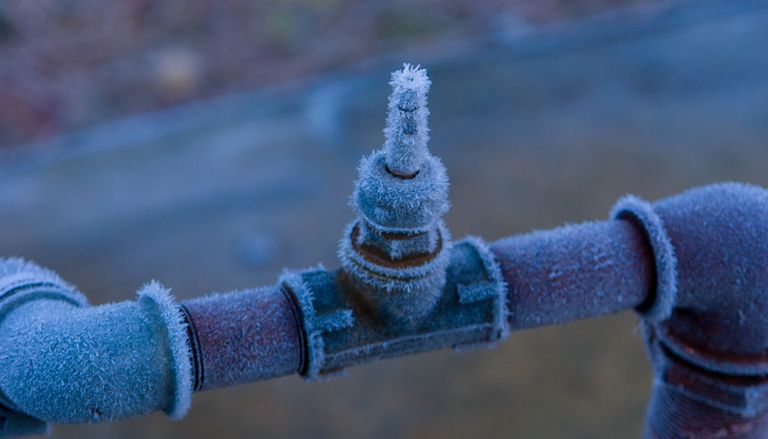Each person has got their own individual piece of advice about How To Avoid Freezing Pipes.

Cold weather can ruin your pipes, specifically by freezing pipelines. Here's how to avoid it from happening and what to do if it does.
Intro
As temperatures decrease, the threat of frozen pipelines increases, potentially resulting in expensive repair services and water damage. Comprehending just how to prevent frozen pipes is critical for homeowners in cool environments.
Understanding Icy Pipelines
What triggers pipelines to freeze?
Pipelines freeze when revealed to temperatures listed below 32 ° F (0 ° C) for extended durations. As water inside the pipelines freezes, it increases, putting pressure on the pipe wall surfaces and potentially triggering them to break.
Risks and damages
Icy pipelines can result in water disruptions, residential property damages, and expensive repairs. Ruptured pipes can flooding homes and cause extensive architectural damage.
Indicators of Frozen Water Lines
Identifying frozen pipelines early can avoid them from breaking.
How to identify icy pipelines
Try to find reduced water flow from faucets, unusual smells or sounds from pipes, and visible frost on exposed pipelines.
Avoidance Tips
Protecting susceptible pipes
Cover pipelines in insulation sleeves or utilize heat tape to secure them from freezing temperature levels. Focus on pipelines in unheated or external locations of the home.
Heating strategies
Maintain indoor spaces effectively heated up, especially locations with plumbing. Open cabinet doors to permit warm air to circulate around pipelines under sinks.
Shielding Exterior Plumbing
Yard hose pipes and outdoor faucets
Separate and drain yard hoses prior to winter. Set up frost-proof faucets or cover outdoor taps with shielded caps.
What to Do If Your Pipes Freeze
Immediate actions to take
If you believe frozen pipes, keep taps open to eliminate stress as the ice thaws. Use a hairdryer or towels soaked in hot water to thaw pipelines gradually.
Long-Term Solutions
Architectural changes
Consider rerouting pipes away from outside walls or unheated locations. Include added insulation to attics, basements, and crawl spaces.
Updating insulation
Buy premium insulation for pipes, attic rooms, and wall surfaces. Correct insulation assists preserve constant temperatures and decreases the risk of icy pipes.
Conclusion
Protecting against icy pipes needs proactive actions and quick actions. By recognizing the reasons, signs, and preventive measures, homeowners can safeguard their pipes during winter.
Helpful Tips to Prevent Frozen Pipes this Winter
UNDERSTANDING THE BASICS: WHY PIPES FREEZE AND WHY IT’S A PROBLEM
Water freezing inside pipes is common during the winter months, but understanding why pipes freeze, and the potential problems it can cause is crucial in preventing such incidents. This section will delve into the basics of why pipes freeze and the associated problems that may arise.
THE SCIENCE BEHIND FROZEN PIPES
When water reaches freezing temperatures, it undergoes a physical transformation and solidifies into ice. This expansion of water as it freezes is the primary reason pipes can burst. As the water inside the pipe freezes, it expands, creating immense pressure on the walls. If the pressure becomes too great, the pipe can crack or rupture, leading to leaks and water damage.
FACTORS THAT CONTRIBUTE TO PIPE FREEZING
Low Temperatures: Extremely cold weather, especially below freezing, increases the risk of pipes freezing. Uninsulated or Poorly Insulated Pipes: Pipes located in unheated areas, such as basements, crawl spaces, or attics, are more prone to freezing. Insufficient insulation or lack of insulation altogether exacerbates the problem. Exterior Wall Exposure: Pipes running along exterior walls are susceptible to freezing as they encounter colder temperatures outside. Lack of Heating or Temperature Regulation: Inadequate heating or inconsistent temperature control in your home can contribute to frozen pipes. PROBLEMS CAUSED BY FROZEN PIPES
- Pipe Bursting: As mentioned earlier, the expansion of water as it freezes can cause pipes to burst, resulting in significant water damage.
- Water Damage: When pipes burst, it can lead to flooding and water damage to your property, including walls, ceilings, flooring, and personal belongings.
- Structural Damage: Prolonged exposure to water from burst pipes can compromise the structural integrity of your home, leading to costly repairs.
- Mold and Mildew Growth: Excess moisture from water damage can create a favorable environment for mold and mildew growth, posing health risks to occupants.
- Disrupted Water Supply: Frozen pipes can also result in a complete or partial loss of water supply until the issue is resolved.
WHY CERTAIN PIPES ARE MORE PRONE TO FREEZING
- Location: Pipes located in unheated or poorly insulated areas, such as basements, crawl spaces, attics, or exterior walls, are at higher risk of freezing.
- Exterior Pipes: Outdoor pipes, such as those used for irrigation or exposed plumbing, are particularly vulnerable to freezing as they are directly exposed to the elements.
- Supply Lines: Pipes that carry water from the main water supply into your home, including the main water line, are critical to protect as freezing in these lines can affect your entire plumbing system.
- Underground Pipes: Pipes buried underground, such as those connected to sprinkler systems or outdoor faucets, can be susceptible to freezing if not properly insulated.
https://busybusy.com/blog/helpful-tips-to-prevent-frozen-pipes-this-winter/

I found that entry about Preventing and dealing with frozen pipes while surfing around the web. Remember to take the opportunity to promote this blog post if you appreciated it. I praise you for being here. Revisit us soon.
Click Here